Jason Maloney reviews
V o l u m e # 4 0 The 40 Best Singles That Missed The UK Top 40 Online Date: 20th December 2004
To celebrate the 40th issue of this column, here are the best records to never grace the UK Top 40. These selections are unapologetically personal, and of course highly debatable to many. Some of these singles missed out on more than one occasion. A few of the acts included also have other near-misses to their name which were on the original shortlist, but for the purposes of this rundown only one choice per artist has been allowed.
The proliferation of singles from the 80s, including many songs assumed to be bigger hits than they were, highlights the changes within the singles market over the past couple of decades. Namely the overall decline in sales which made it more possible for acts with loyal fanbases to crack the 40 rather than fall tantalisingly short in the lower 40s and 50s as had previously happened.
Many of the 40 records featured below fared significantly better on the US chart, a trend admittedly betraying the musical preferences of yours truly!
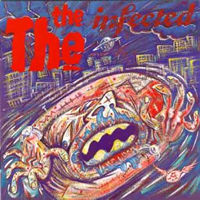
This quirky slice of leftfield funk-pop originally appeared in early 1984, heralding the Was “brothers” Don and Dave’s arrival on the scene. Confusion reigned over the exact pronunciation of the moniker; was it “vas”? “wass”?.
Out Come The Freaks came agonisingly close to the Top 40, falling just short at #41. Four years later, when the augmented duo had begun to clock up a few decent-sized hits like Walk The Dinosaur and Spy In The House Of Love, a reworked version of the song was issued. Yet again though, it couldn’t make the cut, peaking second time around at #44.
39. Paula Cole – I Don’t Want To Wait
The Complete Book Of The British Charts claims this song was from the City Of Angels film. It wasn’t, instead being used over the opening credits of teen drama Dawson’s Creek (although it wasn’t specifically written for that purpose).
Taken from Cole’s breakthrough 1997 set This Fire, which also included the #14 UK hit Where Have All The Cowboys Gone?, the album’s second single did the business Stateside but could only manage #43 in Britain. For the record Feelin’ Good, from the same album, was the track used in City Of Angels.
38. The The – Infected
One of several The The singles which could have made this rundown (This Is The Day, Uncertain Smile and Sweet Bird Of Youth being the others), Infected was a #48 hit at the back-end of 1986.
Its sleeve artwork, depicting the devil masturbating, caused a furore and sales were doubtless hampered by the removal of copies while the offending covers were withdrawn and replaced by a sanitised version. The album of the same name which soon followed didn’t suffer, however, being certified Gold on release and making the Top 20 in the busy pre-Christmas market.
37. Prefab Sprout – Cars & Girls
Paddy McAloon’s scathing critique of the Springsteen aesthetic that informed much of The Boss’ output in the 70s and early 80s (“some things hurt more, much more than cars and girls… I guess this world need its dreamers; may they never wake up”), Cars & Girls should have been a guaranteed Top 40 entry in Februray 1988, if only for the fact it was the first new Prefab Sprout material in almost three years.
Since 1985’s celebrated sleeper hit album Steve McQueen, and the thrice-issued classic When Love Breaks Down (which finally made #25 at the third time of asking), several bands with shades of the Prefab sound had enjoyed some chart success; Deacon Blue and Danny Wilson chief among them.
Anticipation surrounding From Langley Park To Memphis, the follow-up to Steve McQueen, allied to rumours of a shelved album called Protest Songs had created quite a buzz upon their return to the fray with Cars & Girls.
A #44 debut left the possibility of the Top 40 open, but the single then went into immediate reverse. From Langley Park To Memphis, on the other hand, entered at #5, the next single The King Of Rock’n’Roll – the one about the jumping frogs and Albequerque – became a surprise Top 10 smash, and the almost-mythical Protest Songs eventually gained an official release in the summer of 1989.
36. Eurythmics – Shame
Once they finally broke through in early 1983 with Sweet Dreams Are Made Of This, only two Eurythmics singles did not make the UK Top 40. Julia, from their soundtrack to the film version of 1984, surprisingly made #44 in January 1985.
Almost three years later, the second single from the dark and wonderful Savage album narrowly missed out by one place. In some ways, Julia’s failure was more startling, given that Eurythmics were still a singles force at that time and came immediately after the Top 5 exploits of Sexcrime (Nineteen-Eighty-Four).
By 1987, their popularity had become predominantly as an albums act, with the odd Top 10 hit here and there, but a loyal fanbase usually ensured at least a Top 30 berth. Shame was the obvious single from Savage; a gorgeous chiming melody and lyrics that were at the core of the album’s commentary on society and the media.
After two albums of American-friendly rock (Be Yourself Tonight and Revenge), it seems the public jusy wasn’t ready to embrace the darker side of Eurythmics again; it took the 4th single You Placed A Chill In My Heart to ostensibly rescue Savage’s dwindling sales.
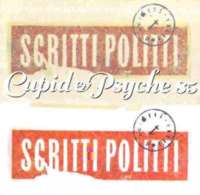
Cupid & Psyche ’85
This track from 1989’s Jeff Lynne-produced Full Moon Fever album reached #7 in the US but only managed #64 on this side of the pond. In fact, only one of Full Moon Fever’s four singles cracked the UK Top 40 – I Won’t Back Down making #28.
Free Fallin’ subsequently found a wider audience thanks to its inclusion in the Cameron Crowe film Jerry Maguire some 8 years later.
34. Lloyd Cole & The Commotions – Forest Fire
Baffling lyrics aside – “If she don’t calm down, she will burn herself out like a forest fire. Now doesn’t that make you smile?” – the band’s second single was something of a tour de force; building from an almost whispered first couplet into a beautiful slice of widescreen caledonian pop.
Yet it stalled at #41, lost amongst the Careless Whispers and I Just Called To Say I Love You’s in the late summer of 1984. Thankfully, it didn’t derail their career; debut album Rattlesnakes still hit the Top 20 shortly after. Polydor never panicked, not even when Rattlesnakes’ title track fared significantly worse as a single, and their patience was rewarded with three Top 40 hits out of three from sophomore set Easy Pieces in 1985.
A reissue of Forest Fire in 1989 (apparently remixed, but not noticeably so) also failed to trouble chart compilers, making it one of 8 songs in this rundown to have had two bites at the Top 40 cherry without success.
33. Yello feat. Shirley Bassey – The Rhythm Divine
Written by the late Billy Mackenzie for the Swiss synth soundscapers’ 1987 album One Second, the song introduced the Welsh diva to a new generation and created quite a buzz in certain music magazines. Mackenzie, by then the sole member of The Associates, later cut the track himself for a never-released 1988 album The Glamour Chase, but it was in the hands of Bassey with messrs Blank and Meier in support that The Rhythm Divine became a sublime torch song.
The scene was set for a potentially major chart hit. Unfortunately for all concerned, the collaboration was somewhat usurped by the Pet Shop Boys teaming up with Dusty Springfield for What Have I Done To Deserve This? at the very same time, and the single stalled at #54. Bassey would have to wait until 1998 for her comeback Top 40 hit, in tandem with the Propellerheads on the slightly less majestic History Repeating.
32. Def Leppard – Photograph
Surely this was a hit? You’d think so, but the memory sometimes cheats. The lead single from 1983’s big breakthrough album (in America, at least) Pyromania reached only #66 in the UK. Even a re-issue a year later didn’t help its cause.
Photograph was the template for all classic Lep anthems for the next decade, brimming with glorious Mutt Lange multi-tracked magic.
31. Scritti Politti – Perfect Way
The biggest US hit from 1985’s Cupid & Psyche album was paradoxically the least successful in Britain. Well, perhaps not so surprising since it was the fifth and final single release, but on merit alone Perfect Way deserved to grace the UK Top 40. However, reaching #10 on the Billboard Hot 100 was some consolation.
Jazz legend Miles Davis subsequently enlisted the services of producer Arif Mardin after hearing his work with Scritti Politti, covering Perfect Way on his 1986 album Tutu. Davis then memorably guested on the next Scritti single Oh Patti (Don’t Feel Sorry For Loverboy) in April 1988.
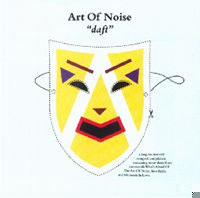
The debut single from the 90s finest singles act peaked at #54 in May 1991. Six months later they would crack the Top 40 with a cover of Neil Young’s Only Love Can Break Your Heart that made #39.
18 hits down the line Sarah Cracknell, Pete Wiggs and Bob Stanley have still to better the #11 high of their most successful single, 1995’s He’s On The Phone.
29. The Art of Noise – Moments in Love
Verging on the ubiquitous at the time, through use on TV and via its ZTT connections, this 1985 single by The Art Of Noise somehow fell short of the Top 40 despite being the follow-up to a #4 smash (Close To The Edit) and despite also being simply exquisite.
You’ll recognise it whe you hear the gorgeous melody constructed from sampled voices through a Fairlight (musical gizmo du jour in the mid-80s), then perhaps struggle to name who the track is by before wondering how it was never a bona fide chart hit.
28. ABC – How To Be a Millionaire
Just two years after a trio of consecutive UK Top 10 hits from the #1 album Lexicon Of Love, ABC found themselves adrift of the chart when the British public failed to warm to their dramatic changes of image and musical style. 1983’s spiky Beauty Stab famously alienated a huge section of Lexicon fans, but it still yielded a brace of minor hit singles.
The second of that pair, S.O.S., just scraped in at #39 so How To Be A Millionaire‘s #49 peak in November 1984 merely continued the downward trend. A crunching dancefloor-friendly groove that nodded heavily in the direction of Shannon’s club smash Let The Music Play, the lyrics were among Martin Fry’s sharpest and the accompanying animated video, although rather dated now, certainly stood out at the time. America loved ABC’s new direction, propelling both How To Be A Millionaire and its follow-up Be Near Me into the Billboard Top 20, while Britain only re-engaged with 1987’s Lexicon-alike set Alphabet City.
27. Robert Palmer – Every Kinda People
Neither the 1978 original nor a 1992 reworking could take this classic song into the Top 40, the versions peaking at #53 and #43 respectively. Another of the late singer’s most renowned moments – 1980’s Johnny & Mary – also missed the main chart, reaching only #44.
26. Prince & The Revolution
Even in his 80s pomp, Prince was not immune to the odd single falling flat on its face. Purple Rain, the trigger for his breakthrough UK success, had a flop in the shape of I Would Die 4 U (#58 in 1984), while 1985’s Around The World In A Day was home to Pop Life (#60 in this country, but admittedly a Top 3 smash in America).
Past form thus dictated that his 1986 set Parade – Music From Under The Cherry Moon would have a single that missed out, and so it proved when Mountains debuted at #45 before disappearing. The track even struggled Stateside, peaking at #23 at a time when Prince hardly ever missed the Top 10 over there. Yet it’s arguably the standout track on Parade; a rolling, rollicking brew of pianos, guitars and drums built around a cascading hookline that almost takes the breath away.
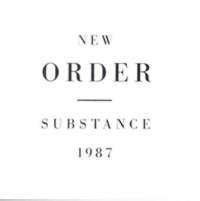
Substance 1987
By 1987, the ZTT fairydust was not having quite the same effect as in previous years; Frankie Goes To Hollywood had imploded as their commercial fortunes nosedived, The Art Of Noise were a shadow of their original selves, and Propganda… well, Propaganda’s main vocalist Claudia Brucken had quit the band to forge a solo career (and marry ZTT publicist and media scribe Paul Morley) in 1986.
A year on, she teamed up with fringe solo artist Thomas Lear to form Act. They bore all the trademark ZTT attributes; an arch style, a knowing wit, fake opulence and plenty of wonderfully pretentious tosh in the liner notes and promotional adverts. Liberace was the cover star of their debut single Snobbery & Decay. It sounded like a cross between Propaganda and Frankie’s own Rage Hard. Fantastic, in other words. It reached #60. Two flops followed in 1988, along with an album which also failed to chart, before the Act was over.
24. Daryl Hall & John Oates – Out of Touch
An American #1 in late 1984, the first single from Big Bam Boom achieved a high of #48 on the UK chart. Although officially the most successful duo in US pop history, with several major hits to their name (mostly between 1980 and 1985), Hall & Oates enjoyed only modest and somewhat irregular action in Britain.
Their previous US chart-topper, Say It Isn’t So, also flopped this side of the Atlantic when it reached #63 in 1983. Out Of Touch was soon remixed by Arthur Baker, who had just helped Bruce Springsteen’s Dancing In The Dark achieve top 5 status in the UK at the second time of asking. Unfortunately, despite being reissued on the back of Big Bam Boom’s only hit single (Method Of Modern Love, a #21 hit in January 1985) Out Of Touch missed again, falling 14 places short of its original peak.
23. The Sundays – Can’t Be Sure
In the post-Smiths, pre-Madchester indie scene, one band secured a place in the hearts of the NME and Melody Maker scribes. They were The Sundays. They sounded like The Smiths in their mellower moments, but fronted by the kind of mousey-but-pretty girl whom boys of a certain age and disposition could fall in love with.
Vocally, there was a hint of Bjork (then still just the co-lead singer with The Sugarcubes) as well as a bit of Cocteau Twins’ Elizabeth Frazer for good measure. Indie heaven. It helped their cause that The Sundays’ debut single was a stunner, perfect for the chilly January 1989 of its release and utterly at odds with anything else of its time. An entry at #45 was decent enough, and the 12-month wait for the album Reading Writing & Arithmetic which followed simply built up the enigma that seemed to surround the band.
When finally released in January 1990, it entered at #4. The band switched to EMI in 1992, scored two Top 40 hits (Goodbye, #27 and Summertime, #15) over the next 5 years but still remained a fanbase act.
22. New Order – Bizarre Love Triangle
There are two New Order singles which are almost equally deserving of their place in this list; 1985’s The Perfect Kiss was a surprise failure, its #46 peak coming just a year after Blue Monday completed 52 weeks on the UK chart and the majestic Thieves Like Us had made #18. Yet, 18 months on from The Perfect Kiss, an even more sublime track missed the Top 40.
Bizarre Love Triangle was taken from the otherwise unloved album Brotherhood, a celestial slice of synth-driven alternative pop which would grace a few American teen movie soundtracks in years to come. In 1988, the Ibiza-induced mess that was Fine Time hit #11 just before Christmas, yet Bizarre Love Triangle will always have the number 56 next to it in chart reference books.
The discrepancy is due to the shift in commercial fortunes of New Order after 1987’s triumphant top 5 smash True Faith, but that doesn’t make it any less unfair on BLT.
21. Les Rhythems Digitales feat. Nik Kershaw – Sometimes
Ridiculed 80s hasbeen teams up with feted European club favourite. Result: one of 1999’s finest singles, critical rehabilitation for Kershaw, but only a #56 chart entry in the UK.
Pleasingly, the song sounds like prime Nik Kershaw fare laced with a more contemporary backing from Jacq Le Cont under his most familiar pseudonym, rather than an embarassing attempt to revive the career of a faded pop star.
One day this track will be rediscovered. It’s too wonderful to remain in obscurity for ever.
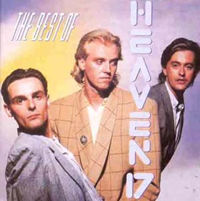
Heaven 17
Taken from their second album It’s My Life, this track from the spring of 1984 best exemplified the sea-change within their music, from angst-ridden synth outfit to more sophisticated, melancholy purveyors of classy pop. The extended prologue hints at the ambient, rhythmical style that characterised 1986’s Colour Of Spring masterpiece, whilst the chorus was oddly euphoric.
Having cracked the Top 40 at the umpteenth attempt with both Today and a re-released Talk Talk in 1982, the singles from It’s My Life all pulled up short, the title song and Such A Shame coming to a halt in the low 40s. It’s My Life, of course, went on to achieve a kind of ubiquity through a 1990 re-issue that went Top 20 and No Doubt’s faithful cover version in 2003 which did likewise.
No such happy ending for Such A Shame.
19. Suede – The Drowners
Few bands were as hyped by the music press in the 90s, and fewer still produced a debut single as supremely-realised as The Drowners. Its peak of #49 triggered the ripples that grew into waves by the time the inferior Metal Mickey gatecrashed the Top 20 later in 1992.
There are shades of The Smiths’ Hand In Glove in the fact that no re-release has ever been forthcoming; not even to promote their misfiring Singles collection in 2003. Maybe only if WEA buy out the Suede back-catalogue, eh.
18. Heaven 17 – Let Me Go
The twice-enormous Temptation (#2 in 1983, #4 in 1993 when remixed) aside, the chaps from The Human League Mk.I who didn’t stay on with Phil Oakey have only enjoyed moderate UK singles success. Heaven 17’s only other major hit was Temptation’s follow-up Come Live With Me (#5), and the single which preceded these back-to-back smashes missed the Top 40 altogether.
Let Me Go is beautifully constructed electro-soul, smoother than the embryonic efforts of 1981’s Penthouse & Pavement album and not as bland as anything from 1984’s How Men Are or 1986’s Pleasure One.
17. Squeeze – Pulling Mussels (From a Shell)
Squeeze’s groan-inducing puns weren’t just confined to their album titles; Pulling Mussels isn’t as bad an example as some (well, you can’t do much worse than Cosi Fan Tutti Frutti), but despite coming bang in the middle of a pretty impressive run of singles (Up The Junction, Another Nail In My Heart, Is That Love) this sprightly ode to seaside exploits could do no better than #44. How and why? Answers on a postcard.
16. Foreigner – Urgent
Masters of the AOR ballad – and commonly despised for it – Foreigner showed they could turn their hand to pent-up funk with this stormer from 1981’s massively-popular album 4 (the one with Waiting For A Girl Like You on it).
Stateside, it had no problems caling the Top 10, but not even two attempts to crack the UK Top 40 could earn a higher peak position than #45.
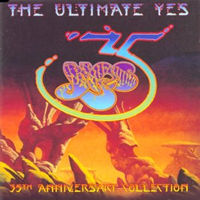
Nobody really noticed when Karl Wallinger, keyboardist with Big Music proponents The Waterboys, fell out with lauded visionary Mike Scott in 1986 and quit to form his own band. World Party’s first single Private Revolution achieved some airplay but little else, then came Ship Of Fools in early 1987.
Suddenly, people started to notice. One of the very first singles in the UK to be available in a CD format, its blend of retro arrangements and contemporary protest lyrics wasn’t quite enough to send the track into the Top 40 (stopping just short at #42) but a fanbase started to form and, come the next World Party album in 1990, a bigger and extremely receptive audience awaited its release.
14. Pixies – Monkey Gone to Heaven
This much-feted and influential band from Boston, USA were darlings of the inkies during the late 80s and early 90s without ever really translating acclaim into huge sales. Their albums would obligingly debut inside the Top 10 before dropping like a stone; the singles would do well to pop in and out in the Top 40 after a week at #27.
Those were the bigger hits, of course. Monkey Gone To Heaven, taken from 1989’s breakthrough sophomore set Doolittle, didn’t even manage that (peaking at a scandalous #60) but then neither did its predecessor Here Comes My Man breach the main chart. The 4AD label’s second greatest act (after the Cocteau Twins) rarely achieved a finer alchemy of edgy surf grunge with melodies to die for.
13. Yes – Leave It
In one of the 80s’ unlikelier metamorphoses, during the decade where unlikely things regularly happened, prog dinosaurs Yes gradually turned into a supersmooth synth-rock outfit that owed more to the influence of ex-Buggles whizkids Trevor Horn and Jeff Downes (drafted in for 1980’s Drama album) than the topographic soundscapes of yore.
By the time of 1983’s catalogue number-titled 90125, the process was complete: Horn was about to fashion the monolithical pop of Frankie Goes To Hollywood, and this was his parting gift. Owner Of A Lonely Heart, welding sublime AOR with banks of Fairlight-generated sound, became a US #1 but the next single was even more of a tour-de-force. Acapella intros, acapella breakdowns, heavenly harmonies – it had the lot. Leave It just snuck into the US Top 20, but the UK was less welcoming and it stopped at #56.
12. Psychedelic Furs – Love My Way
In 1987, at the press launch for his ill-stared Never Let Me Down album, David Bowie namechecked Psychedelic Furs as one of his favourite contemporary acts. How much did this 1982 near-miss by Richard Butler & Co. influenced Bowie’s mid-80s work? Listen and decide for yourself.
Just a year after the dreamy Love My Way peaked at #42, China Girl gave Bowie a Top 3 smash in both the UK and US, and then in 1985 Loving My Alien reprised the style with less commercial reward. The Furs were reduced to soundtracking Brat Pack films and notching up the occasional minor hit single, despite a solid fanbase that put both 1984’s Mirror Moves (home to another strong contender for this list, The Ghost In You) and 1987’s Midnight To Midnight albums in the UK Top 20.
11. The Smiths – That Joke Isn’t Funny Anymore
Today, a #49 chart peak for a single by arguably the band of its era would be unthinkable. Or, as Travis have recently discovered, a sure sign that your fortunes are in terminal decline. Yet in 1985, the failure of That Joke.. to even find the lowest reaches of the UK Top 40 provoked little comment.
Perhaps because in a rare departure from the norm, this Smiths release was neither a taster for an upcoming album nor one of their many standalone singles that regularly appeared. It first appeared nearly six months earlier, hailing from February’s Meat Is Murder album, and even by Morrissey’s standards the song was rather maudlin; hardly the recipe for a healthy chart return in the middle of summer.
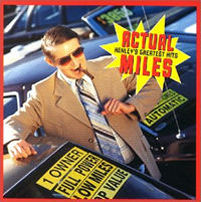
Actual Miles (Greatest Hits)
The title track of erstwhile Eagle drummer Henley’s third solo album, released in the summer of 1989, bore all the classy hallmarks expected of a Bruce Hornsby composition and arrangement. Henley, with that voice so effortlessly able to elevate even the most mundane lyric into the realms of the sublime, wrought every possible ounce of poignancy and emotion from a superb song; Hornsby’s finest moment bar none, and only The Boys Of Summer from 1985 ranks higher in the Don Henley catalogue.
Although a Top 10 US smash, UK Top 40 action proved predictably elusive; aside from Boys.. (a #12 hit in Britain twice over, in 1985 and then again in 1998) no completely-solo Henley release did better than End Of The Innocence‘s #48 peak.
9. Wendy & Lisa – Waterfall
Speaking of songs which enjoyed multiple bouts of chart activity (the first of 3 in a row on this particular rundown) , the debut single by two former members of Prince’s mid-80s band The Revolution (employed between 1983 and 1986) Wendy Melvoin and Lisa Coleman was given two bites at the cherry yet frustratingly fell short on both occasions.
First time around, in September 1987, Waterfall just sneaked in at the bottom end of the Top 75 for a fortnight. Then, following better results with singles from the duo’s second album in early 1989, this chiming pop/rock classic was dusted down, tweaked slightly in the mixing studio, and offered up to what would now surely be a more significant and receptive audience. Not quite. The re-issue stalled some 4 places lower than the original had done.
8. Donald Fagen – I.G.Y. (What A Beautiful World)
The International Geophysical Year referred to in the title was celebrated back in 1957; heady Post-war times of renewed optimism and a determination to create a better world for everyone with the use of technology. Steely Dan frontman Fagen’s masterfully easy-going AOR tune sang of robots programmed by “fellas who could bash in a vision” and of a blissful, stress-free utopian future.
The musical setting took the Dan template and put aside any irony or darker undercurrents that often permeated the band’s 70s work. In the US, I.G.Y. reached a creditable #26 but on the UK Top 40 it drew a blank. Eleven years later, Howard Jones recorded an almost identikit cover version for his Best Of compilation but despite promising airplay his I.G.Y. could only made #78.
7. Fleetwood Mac – Rhiannon
Dating from 1975, and the first Mac album to feature Stevie Nicks and Lindsey Buckingham in the line-up, Rhiannon pretty much established Nicks’ wispy, mystic soft rock style to instant effect in America where the track hit #11 on the Billboard Hot 100.
The only UK hit from the self-titled 1975 album was Christine McVie’s sweetly romantic Say You Love Me, which just scraped a #40 placing for the new-look band. After the phenomenal sales achieved by the follow-up set Rumours, Warner Bros. – looking for product to fill the gap until Fleetwood Mac’s next opus arrived – reissued Rhiannon in 1978. A high of #46 was the result.
6. Afrika Bambaataa – Planet Rock
Long before its ubiquity in popular culture, early Rap took its musical lead from pioneering electronic music by the likes of Kraftwerk. Their 1977 opus Trans Europe Express became the source material for Bambaataa’s explosion of beats and rhymes.
Although contemporaries such as Grandmaster Flash and the Sugarhill Gang enjoyed Top 10 success on the UK singles chart, Planet Rock could only reach #45.

It was early 1988. Just as Lloyd Cole & The Commotions’ final single From The Hip completes its short run at the fag end of the UK chart, probably the finest Lloyd Cole & The Commotions track they never wrote or recorded comes along.
By some relatively obscure band from Down Under, no less. “Wish I knew what you were searching for, I might have known what you would find…”. Melancholic widescreen rock with a folksy tinge to it never sounded so divine. Somehow the chances of such a record prevailing in an era of The Jack That House Built, I Should Be So Lucky, and all things plastic and pop, were always going to be remote.
Under The Milky Way at least took The Church into the US Top 30, and the song is still fondly remembered amongst those of a certain age fortunate enough to fall under its enchanting spell.
4. Steve Winwood – While You See a Chance
The track which sent his profile soaring in America might have missed the UK Top 40 on release in early 1981 but until 1986’s Higher Love, it was nevertheless the biggest hit on these shores for the onetime member of ’60s beat combo The Spencer Davis Group and founder of hippy progsters Traffic.
Still only in his early 30s at the time, despite a career already in its third decade, Winwood’s artful adult pop reached its apex on Arc Of A Diver, the sublime album from whence this single came.
3. Christopher Cross – Sailing
Also from 1981, the multi-Grammy winner and renowned session player for West Coast rock acts became a star in his own right with this and a brace of other US mega-hits from the self-titled album which eventually spent 77 weeks on the UK chart. That was thanks largely to the Arthur’s Theme (The Best That You Can Do), which appeared a year later and hit the British Top 10 at the second time of asking.
Sailing, however, had to settle for a #48 peak in the UK. A ’90s cover version of Ride Like The Wind, the other Stateside smash from Christopher Cross (the album), went on to become a major UK hit. Cross’ debut album is one of the longest-running UK album hits never to reach the Top 10, with a highest position of #14.
2. Golden Boy with Miss Kittin – Rippin Kittin
Electroclash, the techno-pop from Europe that wore its early 80s influences loudly and proudly, made little impression on the UK chart in the end. This stunningly reworked track from Golden Boy’s 2002 album Or was unquestionably the best thing ever associated with the genre.
An offbeat, pulsating little ditty with sinister lyrics asking Mummy and Daddy’s permission to go out and take a life, celebrated DJ Miss Kittin provided ice-cool vocals to memorable effect but the song didn’t have a chorus as such. For the single version, extra melodies and chord structures were added, the arrangement was embellished and a “Rippin Kittin, kidding on the run…” refrain seamlessly integrated. All of which elevated the track into a bona fide classic, surely destined for a place among the higher reaches of the Top 10.
Released in late August 2002, Rippin Kittin debuted at #67 and then disappeared forever. Argh!
1. The Blue Nile – The Downtown Lights
There must be something about #67 hit singles. For that was the highest position of this, the first single taken from The Blue Nile’s acclaimed second album Hats in September 1989. Seemingly an acquired taste – those who love them feel an almost unbearable response to the music they produce every 5-8 years, everyone else wonders what the fuss is about – the trio fronted by the unassuming Paul Buchanan quickly assumed a feted position of almost enigmatic proportions soon after 1984’s debut set A Walk Across The Rooftops, and its hit-that-never-was Tinseltown In The Rain.
The five year wait for its follow-up did much to increase the aurra surrounding The Blue Nile, but little to improve singles sales. Hats, however, subsequently entered at #12 on the album listings; 68 places higher than …Rooftops.
Although the chart run for The Downtown Lights was sadly brief and muted, the song didn’t go unnoticed; in 1995 both Rod Stewart and fellow Glaswegian Annie Lennox recorded cover versions. Neither released their interpretations as a single, thus denying The Downtown Lights a good chance of finally cracking the UK Top 40 in some form.
Maybe one day someone else will bring such a gorgeous song the exposure it has always deserved.
Page Content copyright © Jason Maloney, 2004.
Reviewer of movies, videogames and music since 1994. Aortic valve operation survivor from the same year. Running DVDfever.co.uk since 2000. Nobel Peace Prize winner 2021.
